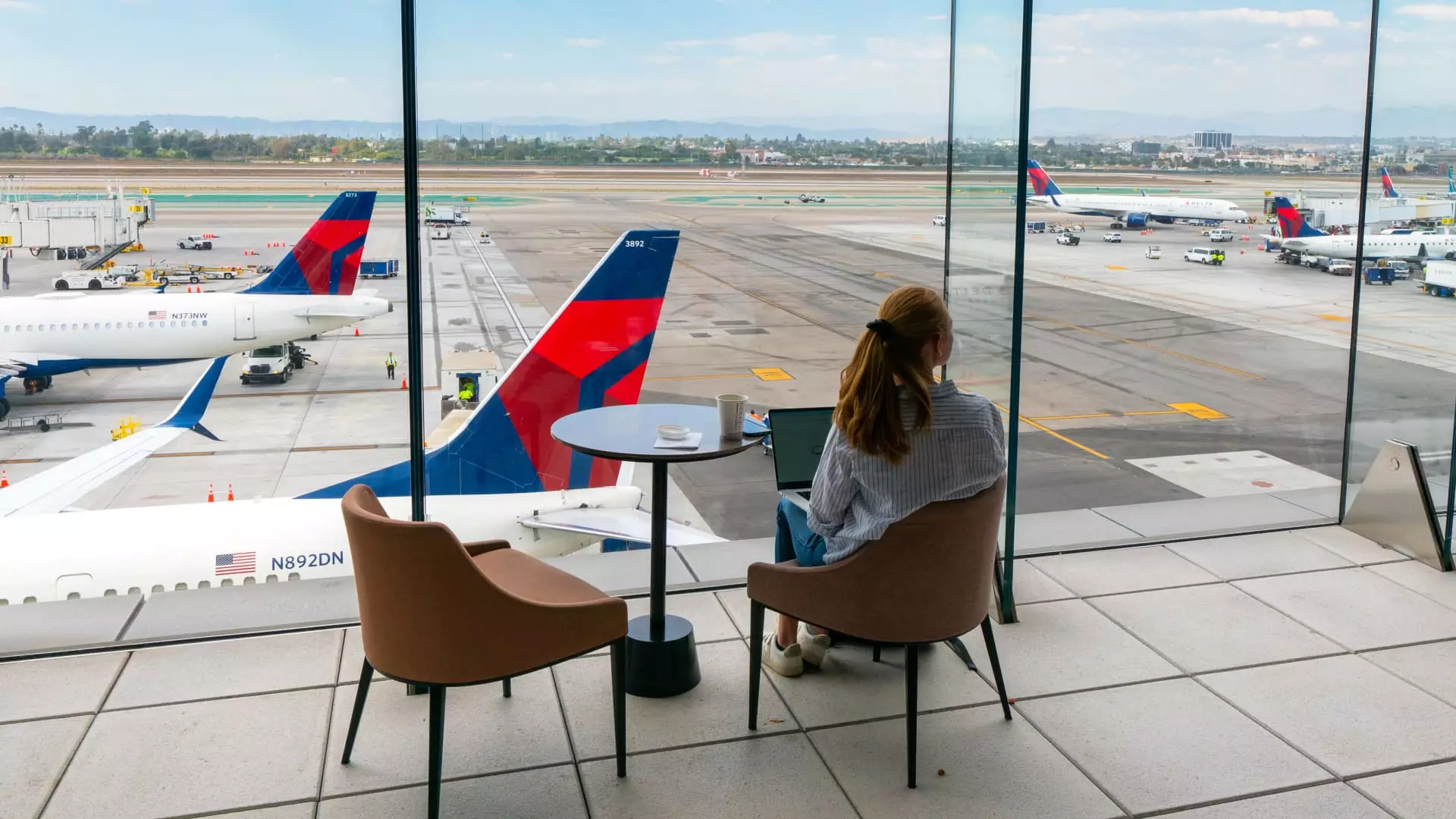The airline industry is often referred to as a barometer of the broader economy. Recently, however, this metaphor has taken on a more somber tone. Major players like Delta Air Lines and Frontier Airlines have revised their outlooks for 2025, signaling a shift from optimism to caution, reflecting a convoluted economic landscape in the United States. This trend is alarming, as it suggests that key decision-makers within the airline sector perceive their future operations as plagued by potential downturns rather than growth.
This change in sentiment is not incidental. Factors ranging from the impacts of trade wars to fluctuating consumer confidence play pivotal roles in molding the airline industry’s current challenges. The corporate travel sector, once a reliable revenue stream, is particularly suffering as businesses tighten budgets and insist on caution. Recent reports highlight the declining interest in discretionary spending, which affects not only flights but also ground services and associated tourism. Airlines are now faced with the difficult task of reevaluating strategies that once seemed sound.
Signs of a Shift in Consumer Behavior
The consumer is at the heart of this transformation. A recent survey from the University of Michigan indicates that consumer sentiment has dropped significantly. This shift is reflected in spending patterns seen across numerous services regarded as non-essential, including travel. Bank of America further notes a discernible cooling in expenditure on luxuries, hinting that consumers are becoming increasingly pragmatic—or perhaps fearful—about upcoming economic circumstances.
Delta’s CEO, Ed Bastian, captured the industry’s trepidation succinctly when he remarked on the defensive postures airlines are adopting. Just months before, Bastian had expressed high hopes for 2025 being a record-breaking year for Delta. This sharp turnaround encapsulates the fears gripping the aviation world, suggesting that the luxurious highs experienced post-pandemic may soon be tempered by harsh realities.
Luxury in the Storm: Airlines Adapt
Despite these warnings, airlines are seeking refuge in upscale markets. There’s a notable pivot towards wealthier leisure travelers, which could serve as the lifeboat for airlines sailing through economic turbulence. High-end travel options—such as spacious seating and premium amenities—are being prioritized in an effort to cater to affluent consumers willing to pay a premium. Spirit Airlines’ recent advertising strategy cleverly taps into this sentiment, while promoting their upscale seating options—a testament to airlines’ acknowledgment that comfort may translate into loyalty and higher profits.
Airlines are racing to enhance their offerings with new luxurious planes and services, a strategy marked by significant financial investments. The international markets, especially for long-haul business class flights, are still expected to thrive. Delta’s president noted that consumer resilience remains visible in international travel and other diversified revenue avenues, indicating a multi-faceted approach by these carriers to weather the storm ahead.
The Global Perspective and New Challenges
While the focus on premium services appears to be a sound tactical maneuver, it is not without its complications. Airlines like Delta and United are trimming routes to Canada due to diminishing demand, reflecting a broader pattern that risks compounding the U.S. international travel deficit. This erosion of cross-border travel options adds layers of complexity to an already precarious economic situation.
The statistics are telling: non-U.S. citizen visitor entries into the United States are down significantly compared to pre-pandemic levels. As a potential remedy, airlines are being forced to adjust pricing strategies, introducing fare sales that span through the spring. This opens up opportunities for cheaper flights—an alluring proposition for budget-conscious travelers eager to explore international destinations, especially as travel confiances wane.
Looking ahead amidst the Skies of Change
As airlines adapt to these economic adjustments, they inevitably face several burning questions. Will the efforts to appeal to higher-paying customers yield sustainable revenue? How will the fallout from reduced corporate travel impact profitability? While some view this as a prime summer season for travel to Europe, optimism must be tempered with realism. The evolving landscape suggests that while travelers may benefit from lower fares, the operational challenges faced by airlines indicate a potential struggle to balance profit margins.
In light of these measures, the aviation sector stands at a profound crossroads. The strategies that executives once believed would thrive in a post-COVID world are now under intense scrutiny. With shifting consumer psychology and a landscape marked by caution, every move made by airlines will dictate not only their own fortunes but also the pulse of the economy at large.


Napsat komentář